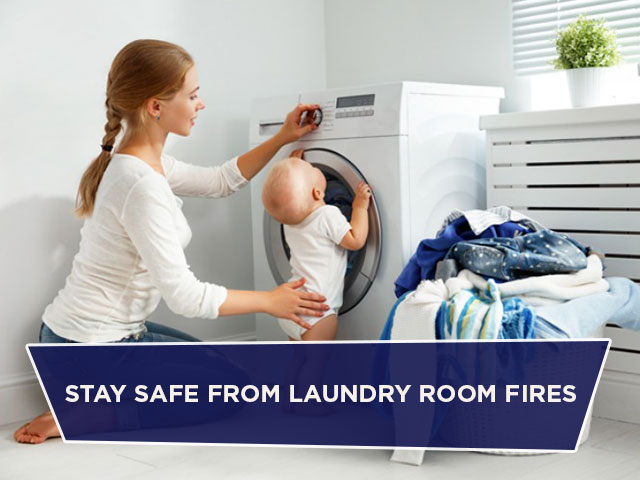
The laundry room in your home might not actually fall on your radar of safety hazards to concern yourself about, but fires caused by washers and dryers are incredibly common and very dangerous. Thousands of American households face damage and injury because of faulty wiring and improperly maintained appliances in the laundry room every year. The National Fire Protection Association estimates that nearly 15,000 homes each year experience fires originating in this room-and that is just in the United States alone. If this is news to you, it might be quite frightening. But rest assured that almost all of these fires can be prevented if you apply a moderate amount of diligence to the following preventative measures.
Safeguard your laundry room.
Though dryers and washing machines may cause these fires, there are numerous components that can add fuel to what might have otherwise been a small fire. It is important to be mindful of what you have stored in the laundry room, as doing so can prevent a small flame from turning catastrophic or even keep fires from starting in the first place.
- Never place items that have been contaminated with gasoline and other combustible materials in the dryer. In fact, combustible materials should never even be stored in the vicinity of your dryer. Find another place to safely keep them-outside of the laundry room.
- Ensure that the outlets that these appliances are plugged into are properly grounded.
- Practice extra caution if your furnace is located anywhere near your laundry room. Never store combustible materials near it, and keep the space free and clear of lint from your washer and dryer.
- Never leave dried laundry inside of the dryer. The accumulation of heat can lead to combustion.
Inspect your appliances.
All dryers have lint catchers, usually located on or near the door of the appliance. This should be cleaned out between uses, as lint is incredibly dry and therefore ultra-flammable. Many dryer-related fires start because somebody neglected to clean out the lint catcher, a task that takes mere seconds. Washing machines will usually have this feature as well, and these lint traps should be cleaned just as frequently.
In addition to the designated lint catcher, the ducting of your dryer can become filled with lint. This feature is what moves the hot air caused by drying your laundry outside, where it can’t cause any harm. Every now and then you should detach the ducting and check it for lint, for the same reason that you clean the lint trap. You should also routinely check the vent on the outside of your house to ensure that it is adequately releasing hot air and is also free of lint.
The material that the ducting is made of is also worth noting. Many dryers come with a flimsy plastic or foil-like ducting system, which we recommend getting rid of promptly and replacing with a rigid metal ducting system.
CS Appliance Service can inspect your troublesome washer and dryer to ensure that they are set up in a way that minimizes the risk of harm to your home and your family. If you have any concerns about the functionality and safety of these appliances, contact us today by calling us at 781-953-9600 or send an email to info@csapplianceservice.com.


